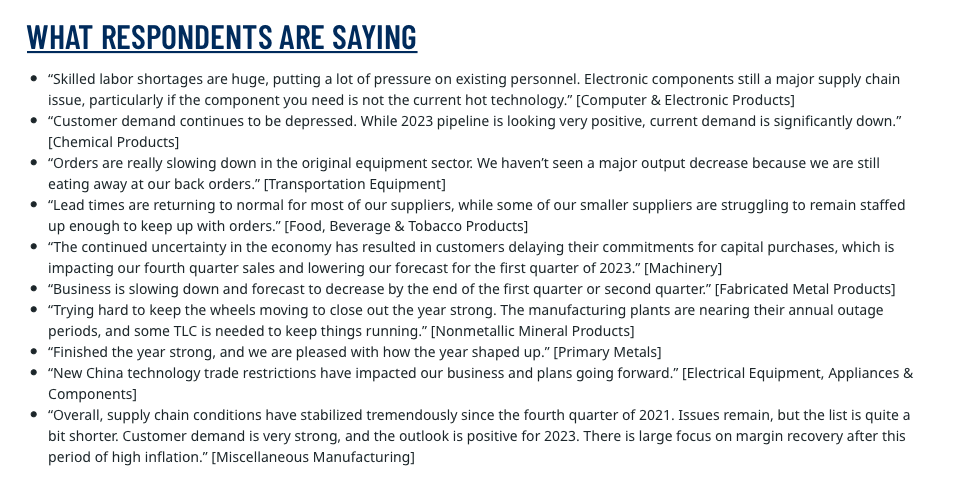January 5, 2023
The following are diffusion indices, based on business surveys, which means that >50 indicates expansion and <50 indicates contraction, and 50 indicates no change. A larger or small number indicates breadth, not intensity, among survey respondents.
ISM Manufacturing Index fell another -0.6 points in December, falling deeper into contraction at 48.4.

Manufacturing employment turned slightly positive, but almost every other indicator showed contraction. Price pressure is down significantly, suggesting inflation is receding as the manufacturing economy slows.

Most manufacturing sectors report business is slowing down noticeably. Supply chain conditions appear to be stabilizing, with reduced demand. Note the one comment that “New China technology trade restrictions have impacted our business and plans going forward.”

S&P’s US Manufacturing PMI also fell -1.5 points in December, deeper into contraction at 46.2, deteriorating at the fastest rate since May 2020. Price pressures have eased noticeably.

S&P’s economists made the following observations:

The ISM Services Index covers a broader range of the U.S. economy. While previously indicating continued expansion, it plunged -6.9 points in December to 49.6, entering contraction. This is a strong recession signal.

The reported pace of business growth in services slowed significantly in December, while new orders fell into solid contraction. Interestingly, upwards price pressure in services remains strong (in contrast to manufacturing).

Most service sectors report slowing sales in December. Some say supply chains are improving, but others are still contending with inflationary price pressure.

The S&P US Services PMI fell -1.5 points in December, falling deeper into contraction at 44.7. Unlike the ISM, this index already showed the US service sector entering contraction a few months ago.

S&P economists offered the following comments:

Leave a Reply